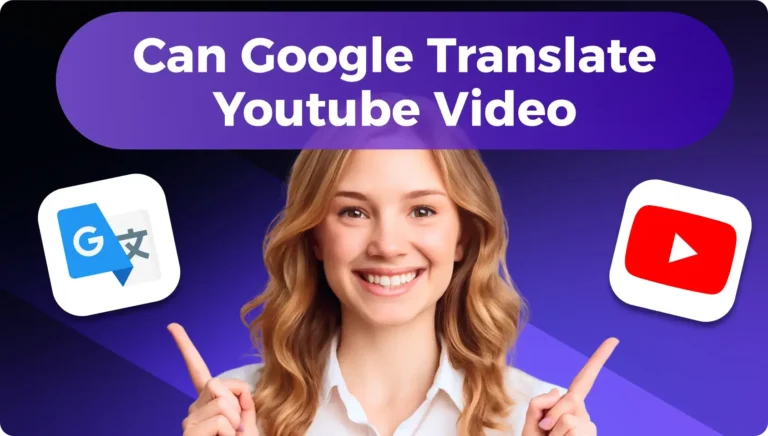Have you ever watched a YouTube video, but you didn’t undertstand its language and wondered if Google Translate could help. Actually, you can use Google Translate to make videos easier to digest. It can not translate video sounds directly, but it help transcribe and translate text along with YouTube in-built subtitling tools.
This article will show you how to use Google Translate to translate YouTube videos. It will also talk about automatic translation options and more advanced tools like AI video translators, that can make the process easier.
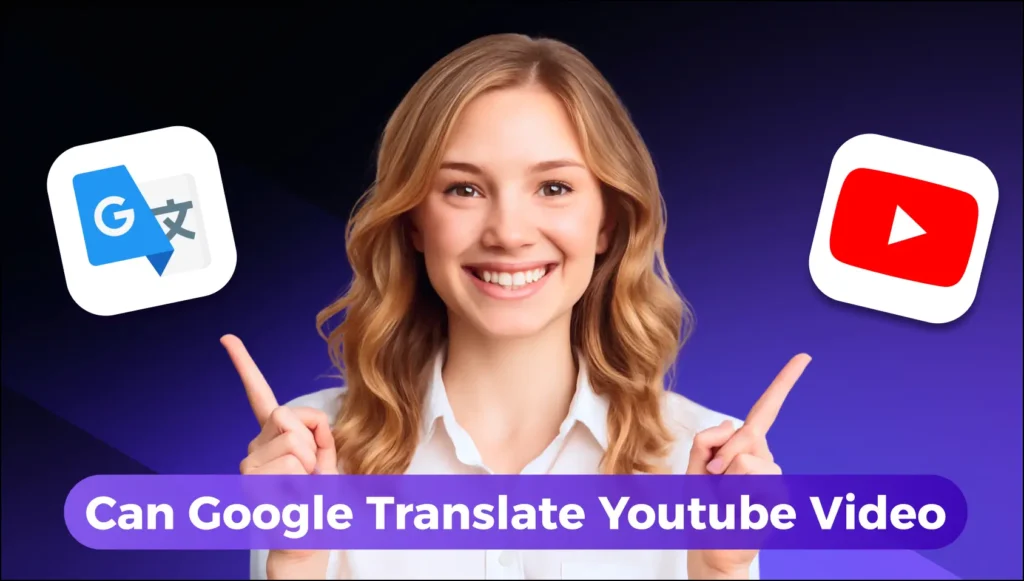
How to Use Google Translate for Videos
To use Google Translate for your video translation, you need to do two major things: use YouTube Studio to transcribe the video and Google Translate to translate the text.
How to Use Google Translate for Videos
The manual method involves two main tools: YouTube Studio for the transcript and Google Translate for the translation.
Part 1: Get Your Video Transcript
1. Access YouTube Studio
Log in and head to your dashboard.
2. Select Your Video
Go to ‘Content’ and find the video.
3. Generate Captions
In ‘Subtitles’, hit ‘Duplicate and Edit’.
4. Copy Transcript
Review the text, then copy everything.
Part 2: Translate
Paste into Google Translate
Paste the text, choose your target language, then copy the translation.
Part 3: Add to YouTube
Manually Add Subtitles
Go back to Studio, ‘Add Language’, and paste the translated text. Sync it manually.
Important Caveats
It Takes a Lot of Time
This manual process is slow and boring, especially for many videos.
Translation Isn’t Perfect
Google Translate often gets slang, idioms, and technical terms wrong.
Step 1: Transcribe the YouTube Video in YouTube Studio
First, you need to locate the transcript of your video. Here is how you can do that.
- Access YouTube Studio
Go to YouTube Studio and log in with your Google credentials.
- Select the Video
Click on the left-hand menu labeled “Content” and find the video you want to add subtitles. Click the “Details” icon for that video.
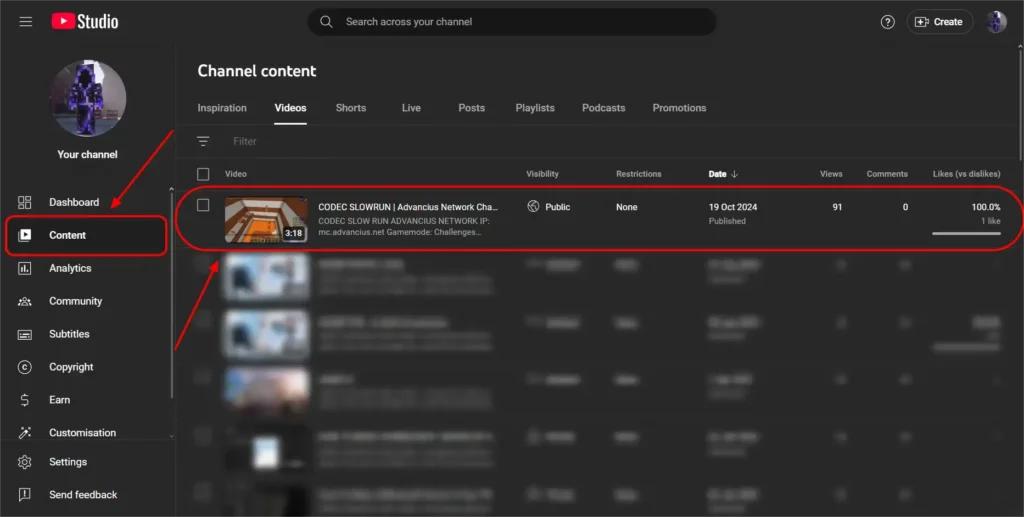
Read More:
How to Add Subtitles & Captions to Youtube Videos
- Generate Automatic Captions
Under the “Subtitles” tab, you’ll see the option for “Automatic Captions.” Click on the icon “Duplicate and Edit” to open the captions in text form.
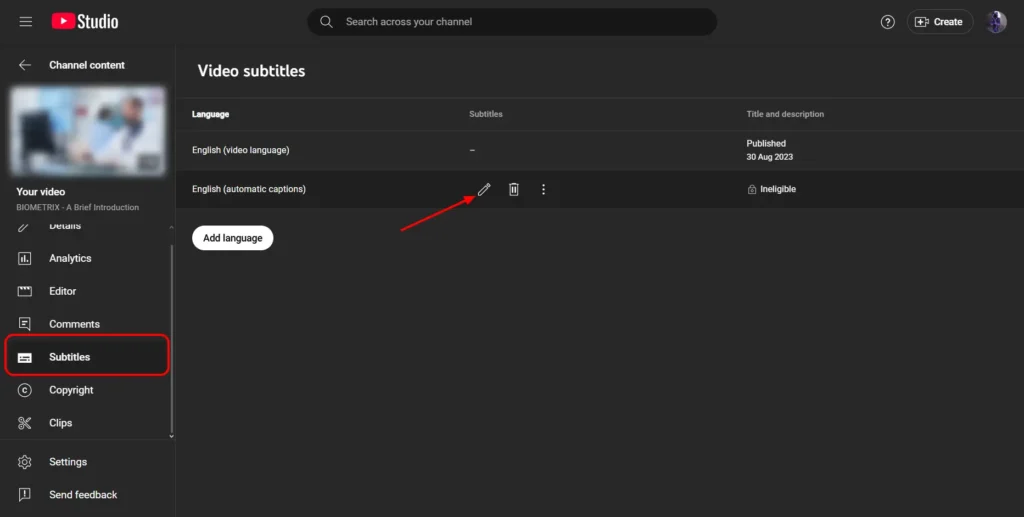
- Copy the Transcript
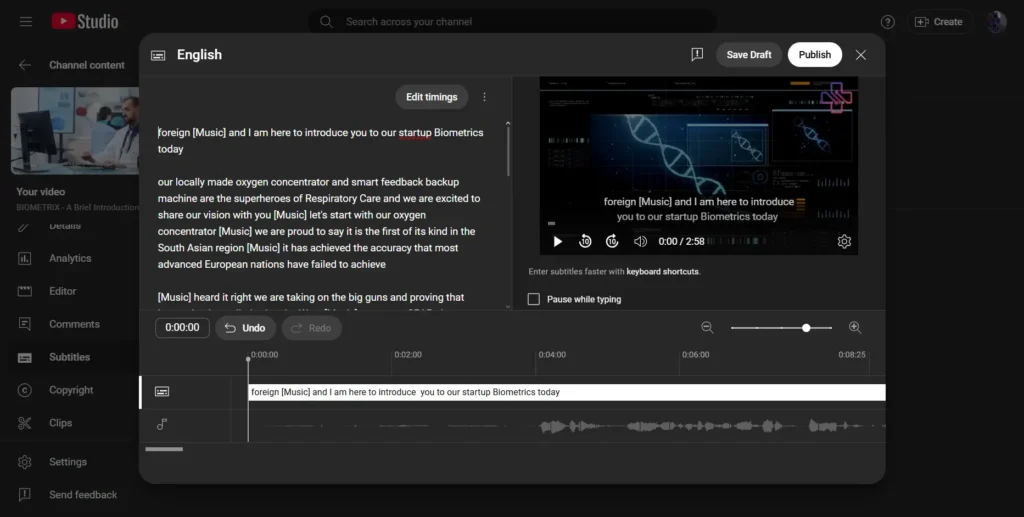
Once the captions are displayed, you can review them for errors, copy the entire text transcript and prepare it for translation.
Step 2: Translate the Captions with Google Translate
You can use Google Translate to translate your text in the language you want.
- Go to Google Translate
Visit the Google Translate website.
- Paste the Transcript
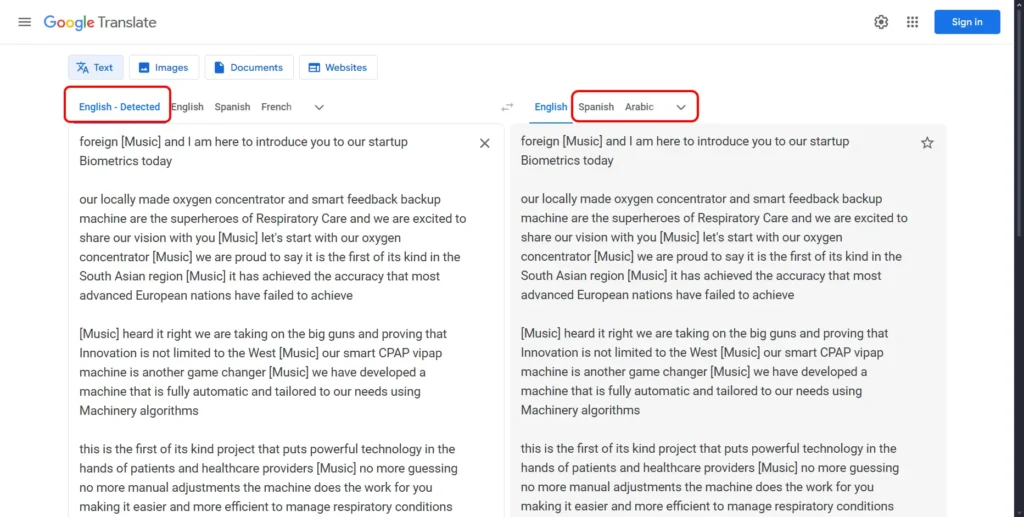
Paste the copied transcript into the left-hand text box on the website. The tool will automatically detect the language.
- Select the Target Language
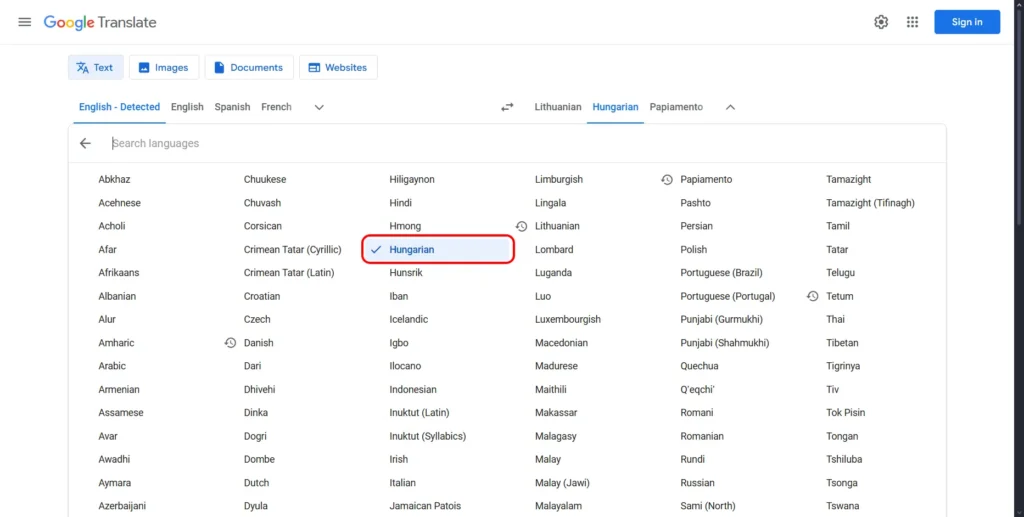
On the right-hand side, choose the language you want the subtitles to be translated into.
- Copy the Translated Transcript
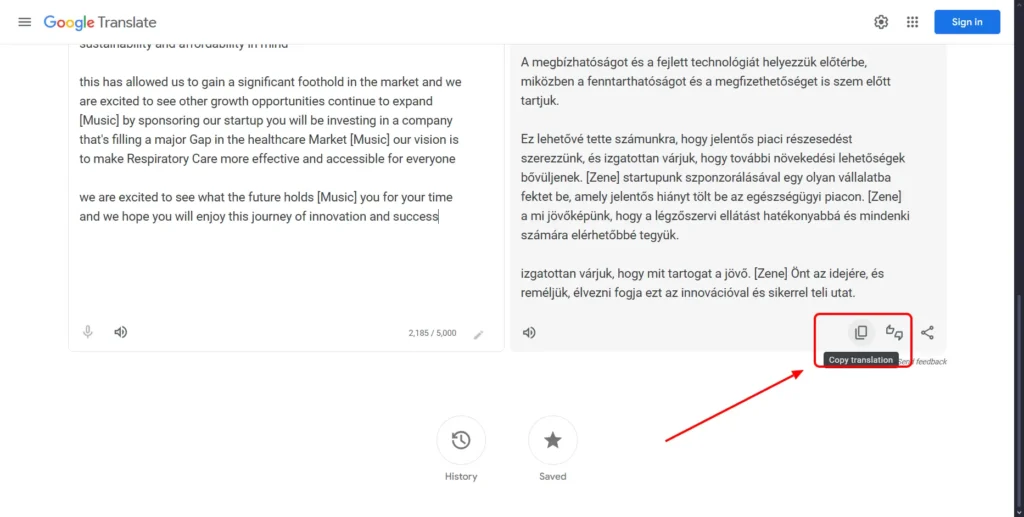
Once the translation is complete, copy the translated text.
- Manually Add Translated Subtitles
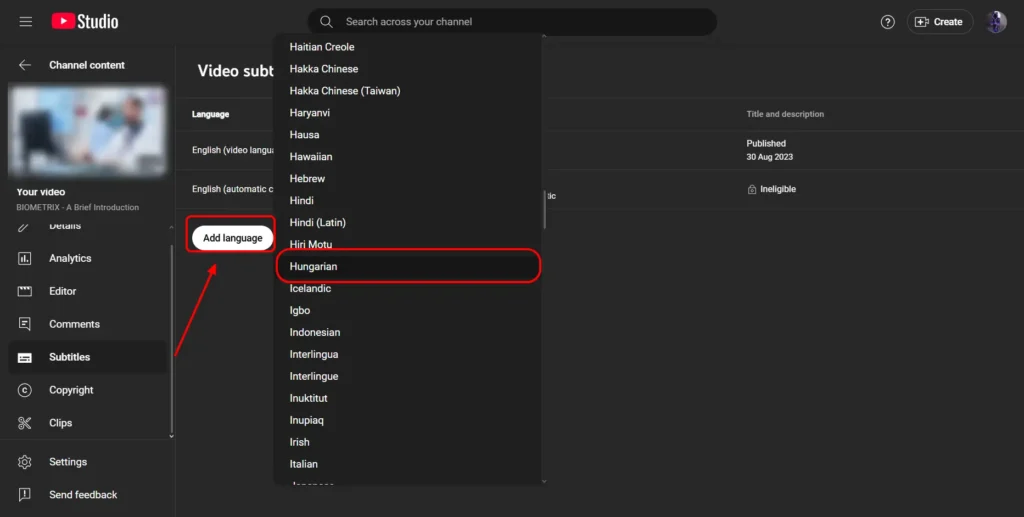
Return to YouTube Studio. Select “Add Language” in the Subtitles section, choose your target language and click “Add.” Paste your translated text into the editor, syncing it manually with the video.
Key Caveats of Manual Translation
Google Translate can save you money and time, but it still take a lot of time and could be boring for creators with many videos to translate. Also, it is not always accurate for idioms, slang or scientific terms.
How to Translate YouTube Videos Automatically
If you feel that Google Translate still requires much manual work, YouTube also has a built-in tool that will help you translate subtitles automatically.
How to Translate YouTube Videos Automatically
If Google Translate is too manual, YouTube has a built-in tool that can help automate the process.
The Automatic Translation Process
1. Publish Captions
First, you must publish accurate captions in the original language.
2. Enable Translation
In ‘Subtitles’, click ‘Add Language’ and choose your target language.
3. Activate Auto-Translate
Click the ‘Auto-translate’ button, review, then publish.
Important Caveat
Accuracy Depends on Source
This method is faster, but the translation quality is only as good as your original captions. Always review for errors.
Use YouTube’s Automatic Translation Feature
- Publish Captions
To enable Youtube’s auto-translate feature, you need to publish the orignal video language first. Auto-translate is available for auto-generated captions, but accuracy may be lower compared to manually edited captions.
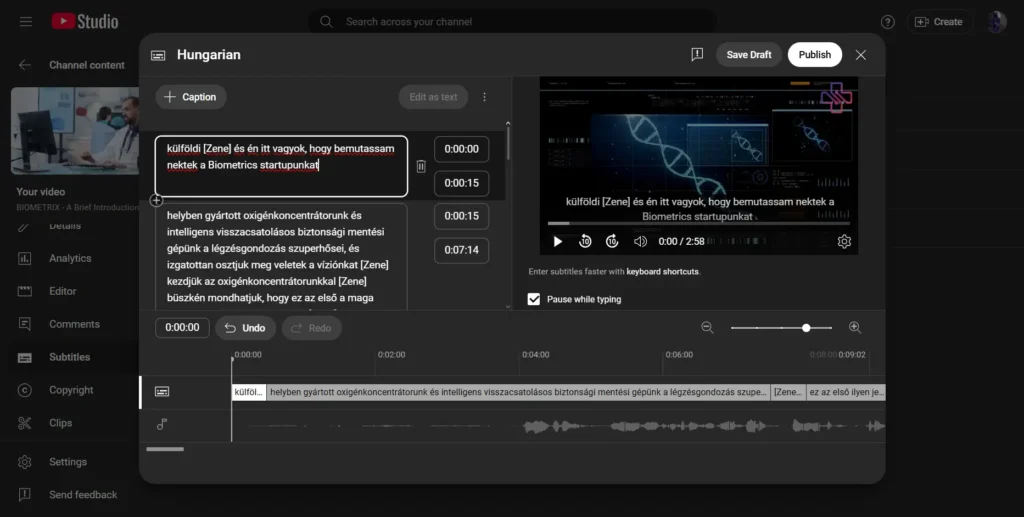
- Enable Translation
Go back to the “Subtitles” tab in YouTube Studio, click “Add Language,” choose your desired language (e.g., Spanish or French), then click “Add” under that language’s tab.
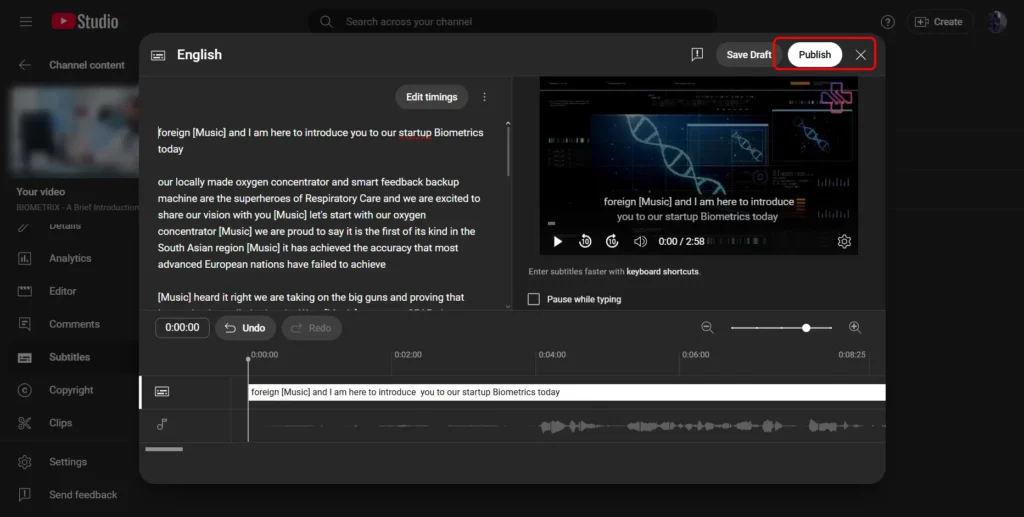
- Activate Auto Translation
Use the “Automatic Translation” button under the new language tab. Review the output for errors, make adjustments and publish the translated subtitles.
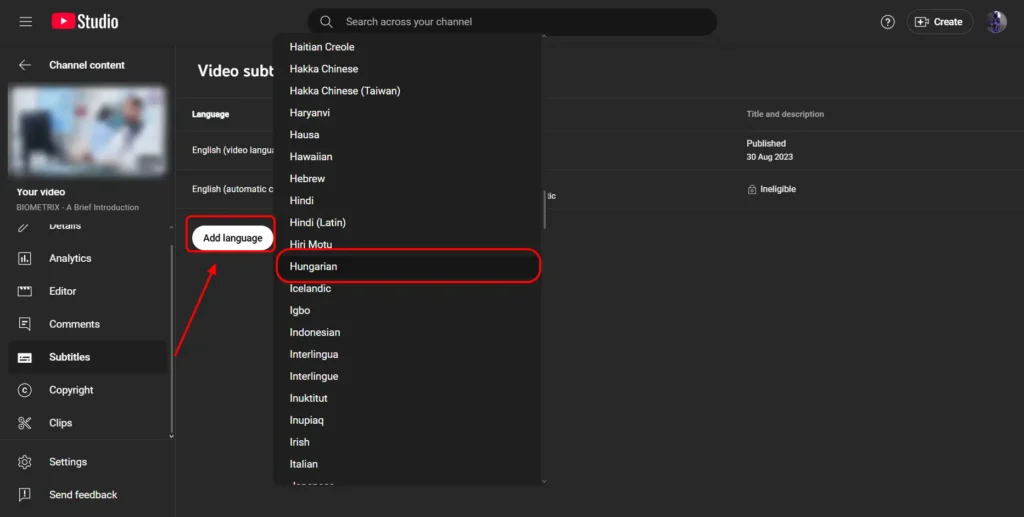
This method makes the process go faster, but it might not be perfect. How good the translation is depends a lot on how accurate the source captions are.
Limitations of Google Translate and YouTube Automatic Translation
Accuracy Issues
Machine translations are not very good at getting the words right. Most of the time, they translate things word-for-word, which can make the text sound strange or off. This could happen because the system does not fully understand what you mean, which could cause mistakes that make your viewers confused.
Text-Only Translation
You must keep in mind that sites like YouTube and Google Translate can only translate subtitles and not music or text that is available /visible on the screen. It can not translate any graphics or words that are on the content of your video.
Context Matters
When translating, it is important to know what the sentence, phrase or cultural reference means in its original language. Machine translations do not take into account what you really mean. Because of this, the result is not what you expected it to be that can make it hard for you to understand the translated text.
How to Use an AI Video Translator for Youtube Translation
If you want to translate videos quickly and easily, you might want to use a third-party AI tool like Vozo. These sites can instantly translate, transcribe and even dub your videos which is not possible with YouTube’s tools.
How to Use an AI Video Translator
For quick and easy translation, a dedicated AI tool can transcribe, translate, and dub your videos instantly.
The AI Translation Workflow
1. Upload Video
Upload a file or paste a video URL.
2. Select Languages
Choose the source and target language.
3. Initiate Translation
The AI transcribes, translates, and dubs.
4. Review & Finalize
Use the editor to make changes and redub if needed.
5. Download Video
Download your translated video or subtitle files.
Ready to try it?
Platforms like Vozo AI offer free trials to test out their automatic translation features.
Upload Your Video
- Start by logging into the Vozo AI Video Translator with your account. You can make a new account if you don’t have one.
- Once you’re have logged in, you can upload your video file from your devices or just paste the video URL if you have.
- You can upload videos in mainstream formats supported by Vozo (e.g., MP4, MOV, AVI) or paste links from YouTube, TikTok, Google Drive, etc.
Select Source and Target Languages
- You can choose the language your video is currently in (the source language) and the language you want translated into (target language).
- Vozo supports 61+ source languages and 31+ target languages (including English, Spanish, French, etc.), covering mainstream global languages and giving you the flexibility to reach a global audience.
Initiate Translation
- Click on the “Start Translation” button to start the translation.
- Vozo will first transcribe the audio from your video, translate it into the selected language and then make a dubbed version.
- The audio will be synced perfectly with your video to ensure a smooth result.
Review and Finalize
- Review the translation result on its built-in editor. You can make any necessary changes to the texts to make sure they fit your message. Then click on redub to adjust the translated results.
Read More: How to Dub a Video In Another Language
Download Translated Video
Once you are happy with the result, you can download the translated video/ subtitle files right from the platform.
You May Also Like:
Best AI Video Translator Apps
Benefits of AI Video Translators
Voice Dubbing with AI
AI tools can do more than just translating texts. They can even help you add voiceovers to your videos in different languages. This means that your videos can talk to people in their own languages.
Automatic Lip-Syncing
With AI tools like Vozo AI, you can also help match the translated audio to the lip movements of the speaker. This makes your videos look more realistic and people can stay focused on the content without being distracted by music and unaligned videos.
Natural-Sounding Voice Cloning
Ai can replicate the original voices and tones. This makes the experience more realistic so people listening in any language will feel like they are hearing the real person.
Higher Accuracy
It is easier for AI translators to deal with tricky things like idioms, cultural differences and technical terms than it is for Google Translate. This means you get more accurate translations that suits the video and make sure people understand what they are watching.
Final Thoughts
Translating your YouTube videos is a good idea if you want to reach people all over the world. You can use Google Translate and YouTube built-in tools to make subtitles in more than one language, either by hand or automatically. On the other hand, to get accurate translated subtitles or dubbing results, AI video translators like Vozo might be the better choices for video localization.
FAQs About Translating YouTube Videos
1. Can I directly upload a YouTube video to Google Translate?
No, Google Translate can only translate words. Before you translate YouTube videos, you have to take out the transcript and translate that text on Google Translate.
2. How accurate is YouTube’s automatic translation?
The accuracy depends on the quality of the original captions. Machine translations often struggle with slang, idioms and cultural nuances, so manual review is recommended.
3. Can YouTube translate a video’s audio directly?
No, YouTube only translates subtitles. For audio translation or dubbing, you will have to use third-party AI tools like Vozo.
4. What is the best tool for translating YouTube videos without subtitles?
AI video translators like Vozo AI are best for translating videos wihtout cc. They do a good job with translation, adding subtitles and dubbing.
5. Is it free to use AI video translators?
Some platforms have free trials where you can use basic features. For most advanced features (e.g., dubbing, voice cloning), you will need a paid subscription or pay-as-you-go credits.

